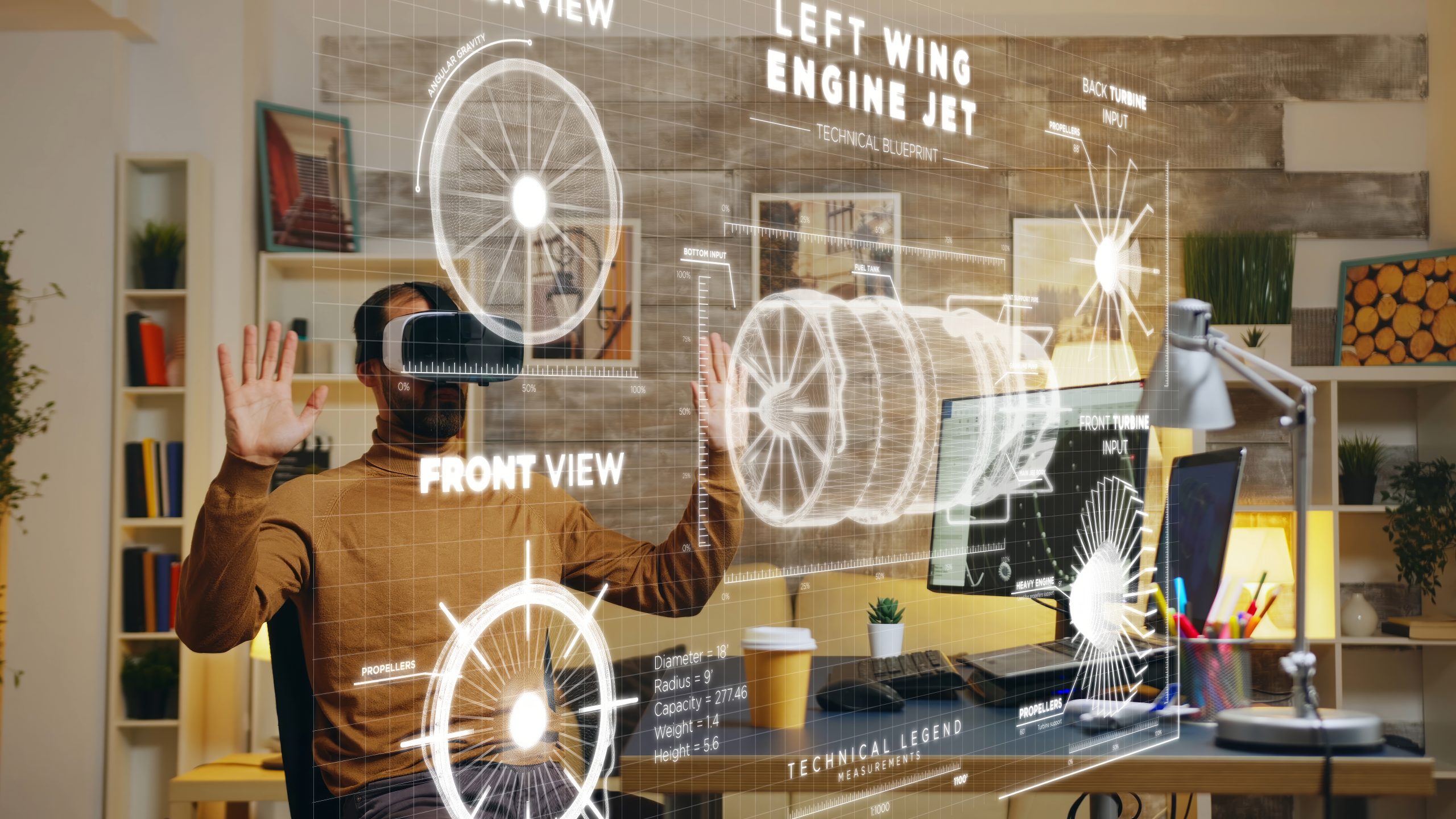
Staying ahead is essential for businesses and designers who want to remain relevant and competitive. As a design company, it’s only natural for us to keep an eye on the latest trends and innovations in digital design. Here are some that we believe will shape the future of digital design.
1. Immersive Experiences with Augmented Reality (AR) and Virtual Reality (VR)
AR and VR technologies are no longer just buzzwords; they’re becoming integral to the digital design landscape. These technologies offer immersive experiences that allow users to interact with digital content in new and exciting ways. From virtual showrooms to AR-enhanced mobile apps, the possibilities are endless. Designers must focus on creating seamless, engaging experiences that blend the physical and digital worlds.
2. AI and Machine Learning in Design
Artificial Intelligence (AI) and machine learning are revolutionising digital design by automating repetitive tasks and providing intelligent design suggestions. AI-driven design tools can analyse vast amounts of data to create personalised experiences and optimise design elements. As these technologies become more sophisticated, they will enable designers to focus on creativity and innovation, enhancing efficiency and productivity. It’s controversial in some quarters but hey, what isn’t these days?
3. Sustainable and Ethical Design
With increasing awareness of environmental and social issues, sustainable and ethical design is becoming a priority. Designers are now considering the environmental impact of their work, from the materials used to the energy consumption of digital platforms. Additionally, ethical design practices that prioritise user privacy, accessibility, and inclusivity are gaining traction. The future of digital design will be defined by a commitment to creating positive and responsible experiences.
4. Neumorphism and Glassmorphism
Neumorphism and glassmorphism are emerging as popular design styles that combine minimalism with a touch of realism. Neumorphism uses soft, extruded shapes and subtle shadows to create a quasi-3D effect, making interfaces look modern and tactile. Glassmorphism, on the other hand, employs frosted glass-like effects with transparency and blur, giving designs a sleek and futuristic appearance. These styles offer fresh and visually appealing alternatives to traditional flat design.
5. Voice User Interface (VUI) Design
As voice-activated devices and virtual assistants become more prevalent, the demand for effective VUI design is growing. Designing for voice involves creating intuitive and conversational user experiences that can understand and respond to natural language. This trend requires designers to rethink traditional user interfaces and focus on auditory elements, ensuring that voice interactions are seamless and user-friendly.
6. Micro-interactions and Motion Design
Microinteractions are small, subtle animations or design elements that enhance user experience by providing feedback and engaging users. These can include button animations, loading indicators, or hover effects. Motion design, in general, is becoming more prominent as designers use animations to guide users, illustrate processes, and add personality to digital experiences. When done correctly, these elements can make interactions more intuitive and enjoyable.
7. Dark Mode Design
Dark mode has become popular in many applications and websites due to its aesthetic appeal and potential benefits for reducing eye strain. Designing for dark mode involves more than just inverting colours; it requires careful consideration of contrast, readability, and user experience. As users increasingly prefer dark mode options, designers must focus on creating flexible designs that work well in both light and dark themes.
8. Minimalism with a Twist
While minimalism has been a dominant design trend for years, it’s evolving to include more expressive and creative elements. This “minimalism with a twist” approach combines clean, simple layouts with bold typography, vibrant colours, and unique graphics. The goal is to maintain the clarity and elegance of minimalism while adding elements of surprise and delight that capture attention and convey personality.
9. 3D and Immersive Graphics
Advancements in rendering technology and web performance are making it easier to incorporate 3D graphics and immersive visuals into digital design. These elements can create more engaging and interactive experiences, from product showcases to virtual tours. As tools and platforms for 3D design become more accessible, we can expect to see more innovative uses of 3D in web and app design.
10. Personalisation and Customization
Users increasingly expect personalised experiences that cater to their preferences and behaviours. Digital design is moving towards more customisation options, allowing users to tailor interfaces to their needs. This trend is driven by data analytics and user feedback, enabling designers to create more relevant and engaging experiences. Personalisation can range from dynamic content adjustments to customisable themes and layouts.
Conclusion
The future of digital design is bright and full of exciting possibilities. By staying informed about these emerging trends and technologies, designers can create innovative, engaging, and impactful experiences.
At Designkroo, we’re committed to pushing the boundaries of design and helping businesses harness the power of these trends to connect with their audiences in meaningful ways. Contact us today to learn how we can bring your design vision to life and keep you ahead of the curve.





